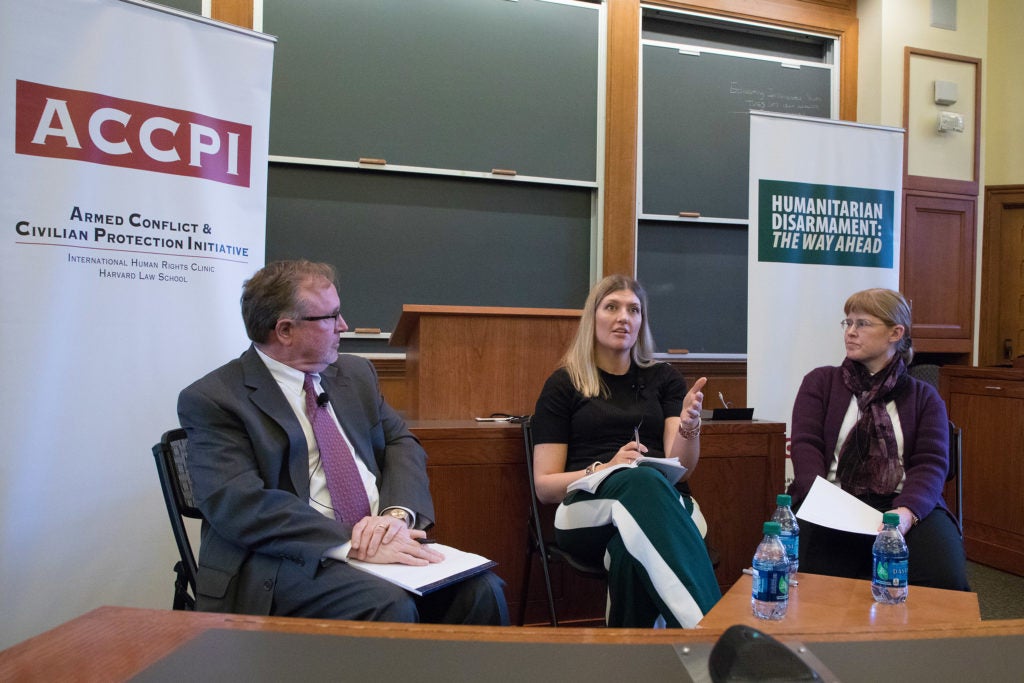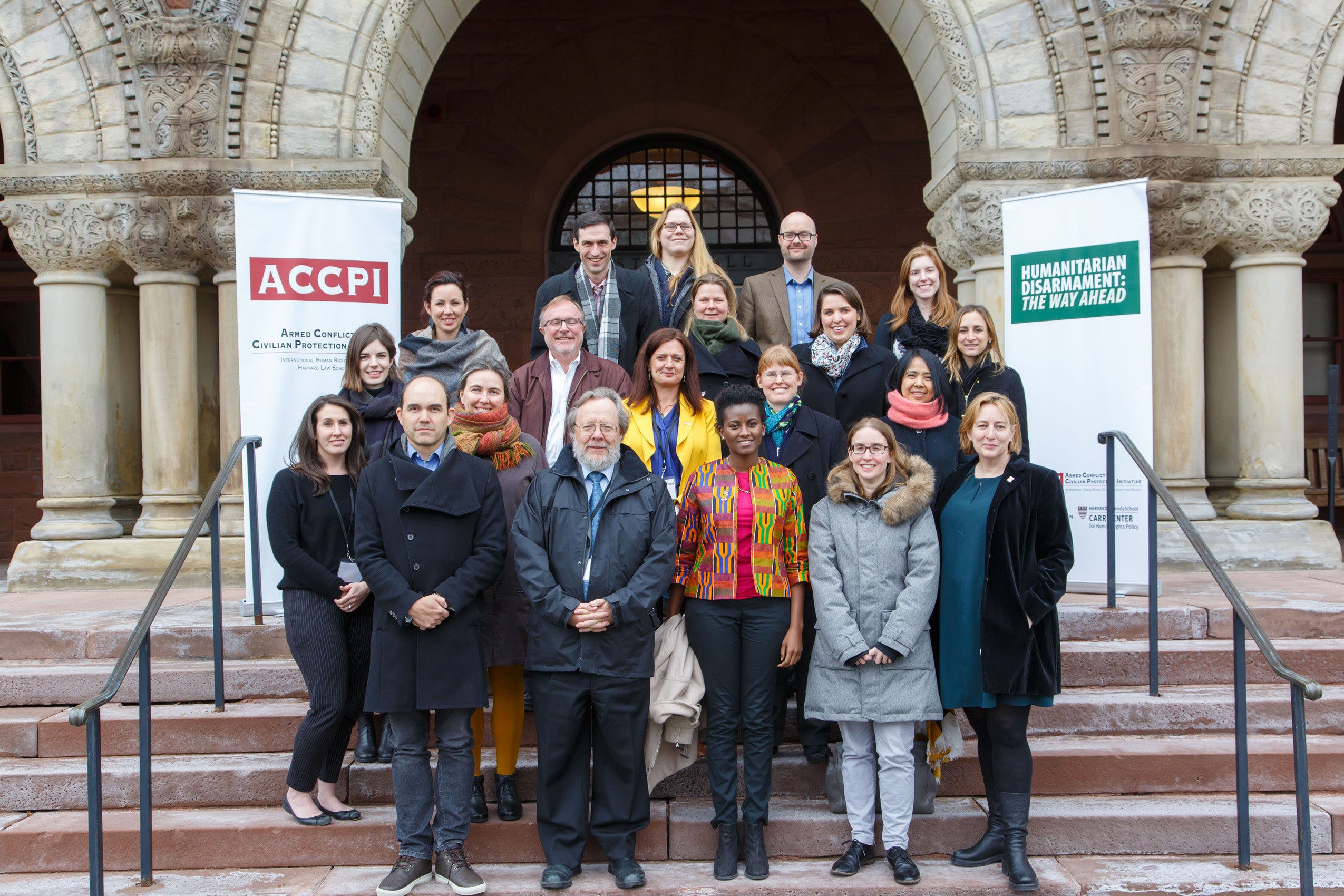Earlier this month, about two dozen international experts gathered for “Humanitarian Disarmament: The Way Ahead,” the inaugural conference of the Armed Conflict and Civilian Protection Initiative (ACCPI) at Harvard Law School.
Drawing on their own involvement in creating international law, conference participants reflected on the development of the humanitarian disarmament movement, which strives to end civilian suffering caused by inhumane and indiscriminate weapons, and discussed where the movement should go from here. Humanitarian disarmament is a key focus of the ACCPI, which formally launched under the leadership of Associate Director Bonnie Docherty ’01 on March 5.
“I was thrilled to have the key players in humanitarian disarmament on campus, and the energy they brought was inspiring,” said Docherty. “It was the perfect way to kick off the ACCPI.”

The ACCPI, which is housed in Harvard Law School’s International Human Rights Clinic (IHRC), aims to reduce the harm caused by armed conflict through targeted advocacy, leadership development, and the generation of innovative solutions. Clinical Instructor Anna Crowe LL.M. ’12 will also support the initiative.
Read more about the Armed Conflict and Civilian Protection Initiative
The March 5-6 conference included two public components.
The keynote event featured the leaders of two Nobel Peace Prize-winning coalitions, who talked about the origins and evolution of humanitarian disarmament, and shared their experiences successfully negotiating treaties that ban landmines, cluster munitions, and nuclear weapons. The speakers, Beatrice Fihn, executive director of the International Campaign to Abolish Nuclear Weapons, and Steve Goose, co-founder of the International Campaign to Ban Landmines, and executive director of Human Rights Watch’s Arms Division, also examined the movement more broadly, looking at the law and the advocacy behind it.
In their concluding remarks, Fihn and Goose both highlighted the important role that ordinary people can play in changing the law governing weapons. Docherty moderated the conversation.

In the second public event, the directors of four civil society campaigns explained how the humanitarian approach to disarmament has influenced their work and how they have adapted it to respond to contemporary challenges. They discussed efforts to curb the urban use of certain explosive weapons, reduce the environmental impacts of armed conflict, preempt new technology that could autonomously make life-and-death decisions, and control the unlawful trade in arms.
The panelists were Laura Boillot, of the International Network on Explosive Weapons; Doug Weir, of the Toxic Remnants of War Network; Mary Wareham, of the Campaign to Stop Killer Robots; and Anna Macdonald, of Control Arms. The panel was moderated by Jasmin Nario-Galace, of the Center for Peace Education.
The conference also provided participants an opportunity to strategize about their work in closed-door sessions. After reviewing the challenges they face, they identified overarching goals for humanitarian disarmament over the next five years. Participants then explored ways to increase collaboration across their community and build on each other’s strengths and successes in order heighten the impact of the various humanitarian disarmament campaigns.
“Humanitarian Disarmament: The Way Ahead” was co-organized by Harvard Law School’s International Human Rights Clinic, the Harvard Humanitarian Initiative (HHI), and Harvard Kennedy School’s Carr Center for Human Rights Policy. Funding was provided by the Harvard Provost Fund for Interfaculty Collaboration, IHRC, HHI, PAX, and an anonymous donation in honor of Carl S. Thorne-Thomsen, Harvard Class of 1968.
***
